Daily Thoughts #15: Learning about Vertical Farming (学习垂直种植)
Finally, I get to attend the long awaited vertical farming class. Last time, it was all about theoretical study and there were no hands on. At the end of the day, I made up my mind and invested in this class for approximate 100USD. All the while, I had been developing an interest on food and farming, but I approach these by eating. LOL, an easier way of approaching. As I found out that by understanding the flavor and texture of the food material, and able to taste all of them, is an enjoyment itself. Well, this was inspired by me following the Kitchen Hell series by Gordon Ramsay.
The world now is facing the problem of climate change. So how does vertical farming has to do with it?
Let me explain. According to the UN statistic, it is estimated that by 2050, the human population will reach a whopping 9.6 billion with 70% of urbanization. While in 2015, according to the statistic from China, the meat consumption per capita for the country was 41kg of pork, 15kg of poultry meat, and 5.4kg of beef and veal. Imagine in a 10 million capacity megacity, the food consumption is insane. The logistic, the distributions, the freshness of the food, the quality of the food, the source of the food and more issues are worth to be seriously taken now. In order to feed so many mouths, it is a must to increase the agriculture output by building more farms. However, we had used up 80% of the agriculture land, so it is impossible to cope with such increase of demand. Moreover, agriculture industry is one of the culprit of releasing the most greenhouse gases, by increasing its capacity, it means making the global warming worse. All of these relate back to food security.
Food security is a global issue. It includes the safety consideration from growing, harvesting, logistic, distribution and until it reaches the consumer. There are problems like food pollution, excessive pesticide usage, food shortage caused by natural disaster, logistic issue and more are affecting the industry right now but here we focus on the security problem of farming. Right now, we need to establish an understanding on the environmental impact of traditional farming. Firstly, in order to gain agriculture land, the forest must be sacrifice (most of the time those are untouched virgin forest), and losing it is as same as losing the Earth’s lung function. Fun fact, forest does not only cleanse the air but acts as a carbon reservoir as well. Most of the carbon are kept in the trunks of the trees, but when deforestation happens, most of the trees were cut and burnt, ending up realizing all the carbon back to the atmosphere. The process of these took decades and even centuries, but to reverse it is just a matter of seconds. Secondly, the use of pesticide, preservative and fertilizer will pollute the environment one way or another. All of the chemical components are not permanent and eventually end up to the river and sea. This is a slow but critical damage that is killing the life below water right now, as well as the affecting our limited source of fresh potable water. Thirdly, in order to maintain the produce to look fresh and nice, the farmers have to resort to pesticides and preservative. Since consumers have no choice but to choose based on visual judgement, the consequence will be that farmer and retailer need to ensure the appearance of the produce is appealing enough to sell. Ending up, the consumers are the one who suffer as we have no idea how much chemical had we consumed (unless we have the time to rinse the produce several time).
Out of these issue, urban farming itself may be the solution. The basic idea is to introduce hydroponic/aquaponic/aeroponic, and stack it up. This will form vertical farming. The move this farm into the city with consumers within proximity is called urban farming. This is a good way to do it as the city has limited land resources.
Hydroponics in vertical farming has these characteristics and benefits:
- No soil needed
- 90% better harvest yield (traditional only can hit 50%)
- Use 70-95% less water than the traditional
- Zero preservative (no need as consumers within proximity)
- No pesticide (as long as it is indoor with controlled environment)
- Reduce fuel consumption (near to consumer)
When talk about transformation of traditional farm to vertical farming in term of business stand point, there are certain consideration to make urban farming feasible:
- Rental
- Utility cost
If these two cost can be reduce significantly, then the viability will be significant.
The other considerations are:
- The area and volume of the space available (how much capacity)
- Consumers (who they are, where they are and how they spend)
- Variation of produce (seasonal or non-seasonal)
- Logistic and distribution (how good is the city logistic service)
- Space usage (whether we can have adaptive reuse of unutilized space like factory, subway, parking towers, malls, rooftop and more)
If all these factors can be resolve and optimize, then urban farming could be the future of our food and agriculture. It is beneficial for us to be aware of the source, the nutrient of the food we consume (as applies to other product like electrical products). Besides, when the trust is built up, people will know that produce from vertical farm (indoor planted) can be consumed directly, without the need of rinsing either. Plus, the texture and taste are way better than the traditional produce. If the technology can be further improved and the cost can be reduced, it is believable that the vertical farming produce will become the norm.
In this course, I also get to learn about how to set up a mini farming set. I am now preparing for the farm, need to find a suitable place to put it and plan how to manage it. I will document everything and share it here. Looking forward to the sharing!
Credit to City Farm for conducting such awesome class.
今天终于等到期待已久的垂直种植课,之前都只是纸上谈兵,看了但没动手。狠下心,决定投资在这儿,花了大概100美元来报读。一直以来,我都对食物和种植挺有兴趣,但每次都只是会吃。哈哈,纯吃货一个。慢慢地我发觉了解这食物的原味并能品尝什么是优良食品也是另外一种享受。这其实也是被GordonRamsay的地狱厨房所启发的。
要知道,现在全世界都面临同一个问题,那就是气候变化。那怎么垂直种植科技跟这个有关联呢?
让我慢慢细说。根据世联组织的数据,在2050年,人类人口估计将达到96亿,并有70%的人口聚集在城市。根据统计,中国在2015年,每个人平均食用41公斤的猪肉,15公斤的鸡肉和5.4公斤的牛肉。那么在拥有千万人口的超级城市中,那个食用量简直是惊人。要怎么把那么多的食物运到那个城市,要怎么保证食物的新鲜度,要怎么保证食物来源是可靠等等问题都是值得深思的。加上,要喂饱那么多的人口,就得有更多的种植和养殖场。我们得需要提高现在食物产量才能解决这个问题,可是我们已经把80%能种植的地皮用尽了。再加上,养殖业本身也是其中一个温室气体排放最多的,如果再增加产量,那温室效应也只有恶化的可能性。这全部就会触及到食物安全的问题。 食物安全,其实是个全球性问题。食物安全本身包括了从种植,收割,运输到进入人们口中,每个步骤都得有一定的安全问题考量,比如食物被污染,使用太多农药,天灾导致食荒,运输问题,而今天就集中讨论种植本身的食物安全问题。首先,我们得了解传统用泥土种植的农耕法对环境的影响。第一,为了要腾出更多的农耕地,就得砍伐森林(很多时候会砍掉原始森林!),失去原始森林就等同于失去了全球肺功能。要知道,森林本身不只能净化空气,也能把多余的碳固化,藏在树身上。如果砍伐并燃烧那些树,就等同于把树木用几十几百年收集的碳释放到空气中。后果就是温室效应。第二,农耕对环境的污染也是不能忽视。普通农耕都会使用农药,防腐剂和肥料。这些化学物都不会持久地呆在田地中,反而会随着水流流向河流并到大海。这对我们水源的污染可以说是致命的,但我们也忽视了这个问题。第三,新鲜度的问题。农夫为了保持农作物的美观,就会不惜一切让农作物看起来很好。其中,添加了不知道多少的防腐和农药。怎样都好,消费者还是会靠视觉来选择食品,因为也没有更好的方法来选择了。那么,吃亏的其实也是消费者本身,因为我们不知吃了多少农药(除非真的非常殷勤的清洗)。
就出于这些种种问题,城市垂直种植有可能可以解决这些问题。它的基本概念就是把传统式的耕种法,转成水培,然后叠起来。这就成了垂直种植。在城市,这是很好的做法,因为地皮有限。而把它移到城市的目的就是减低食物和消费者的距离。
垂直种植本身用的是水培科技。它拥有以下的特征和好处:
- 完全不需要泥土
- 90% 的收成率(传统只能达到50%)
- 比传统种植少70-95% 的用水量
- 完全不需要防腐剂(没有距离问题)
- 完全不需要农药(封闭式室内种植,所以刻意剔除害虫迫害)
- 减少燃油使用(靠近消费者)
谈到转型和生意上的可行性,其实在城市中设立垂直种植是可行的。要注意的事项有:
- 租金
- 水电费
如果以上两点能降到最低点,那么可行性大大提高。
其余的考量有:
- 空间大小(可以知道种植量)
- 消费群体(他们在哪里,他们的花费习惯等)
- 种植的种类(四季食品还是单季食品)
- 运输能力(城市的运输服务)
- 空间使用(如果能把没用的工厂,地铁站,泊车楼,商场,屋顶等使用,那就更好)
如果这些考量都能优化到最极点,那么这将是食物和种植的未来。可以想象,城市的人可以了解食物的来源,可以知道从中可以获取什么养分等资讯。除此,当建立了信任,其实这些室内种植的蔬菜都能直接食用,不用怎么洗了。加上,口感和味道都比用土种出来的好吃。如果科技能再优化,把成本降下来,那么消费者将享有更便宜的室内种植农作物了!
在这课程中,也有机会学到如何开始种植,我在过后的几个星期将筹备我的种植计划,并会记录我的种植过程。下次再聊!
再次感谢City Farm的热心教导。
Here are some photos from the class:
这里是一些课程的照片:
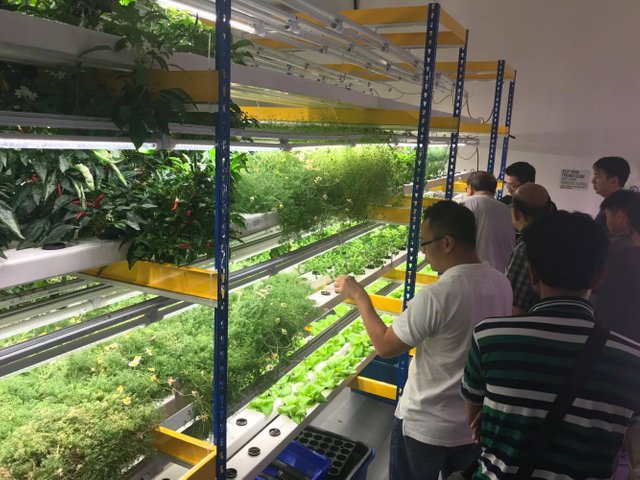
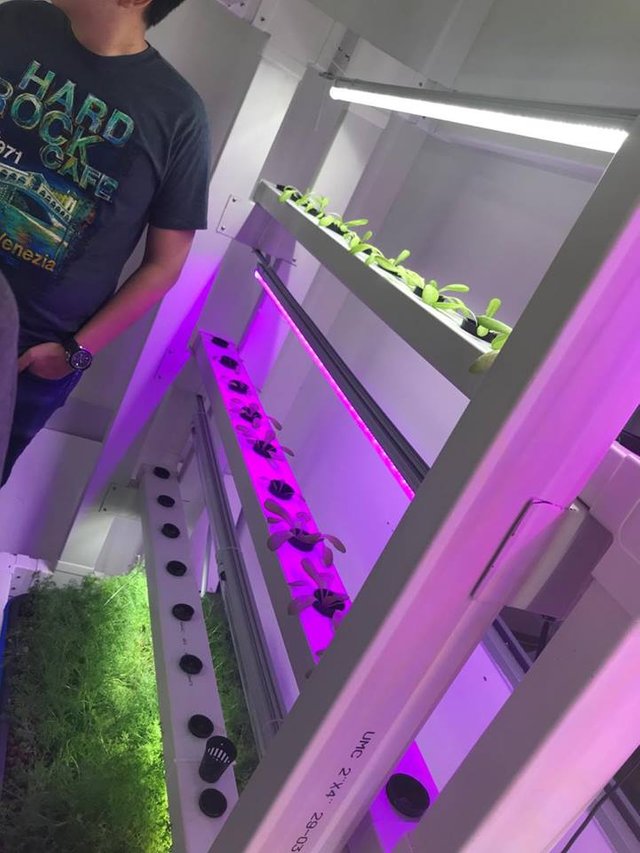
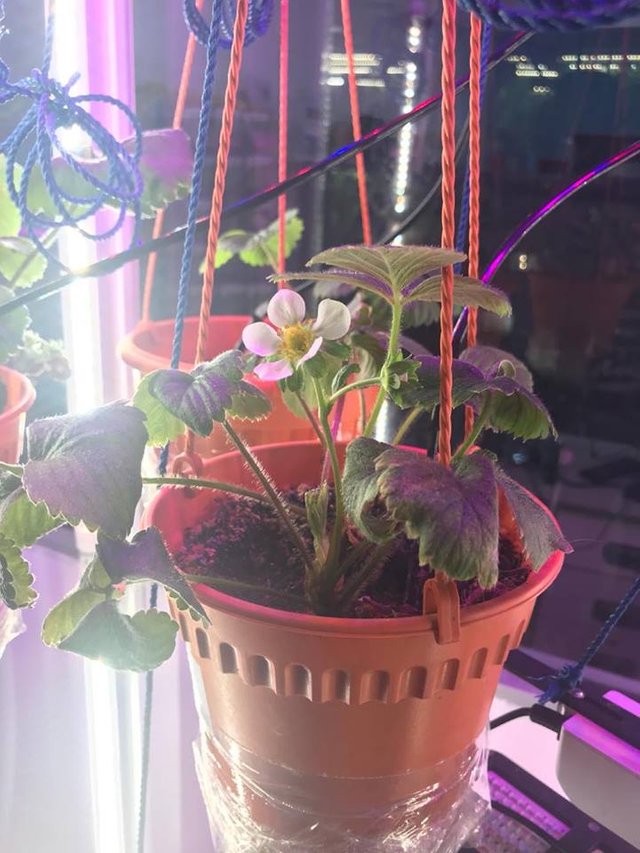
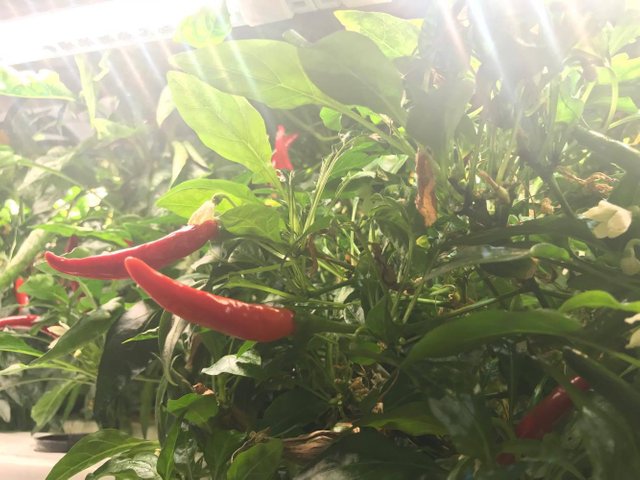
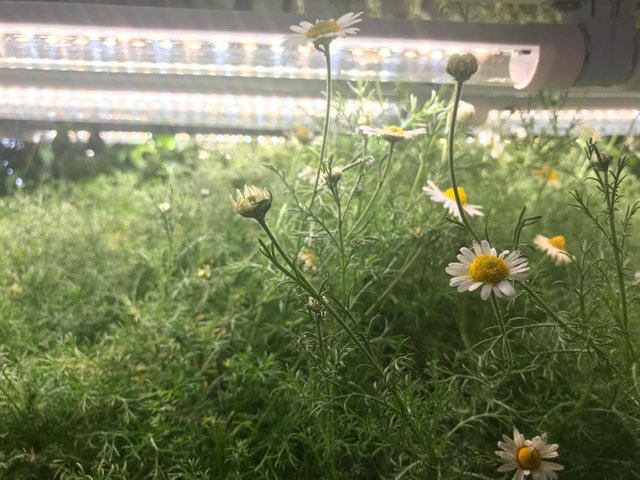
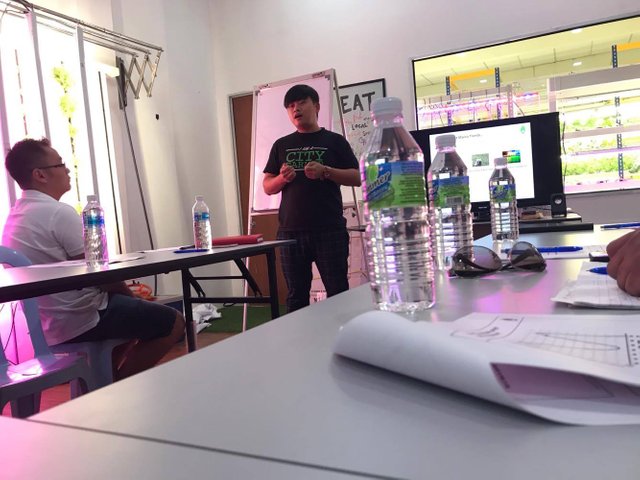
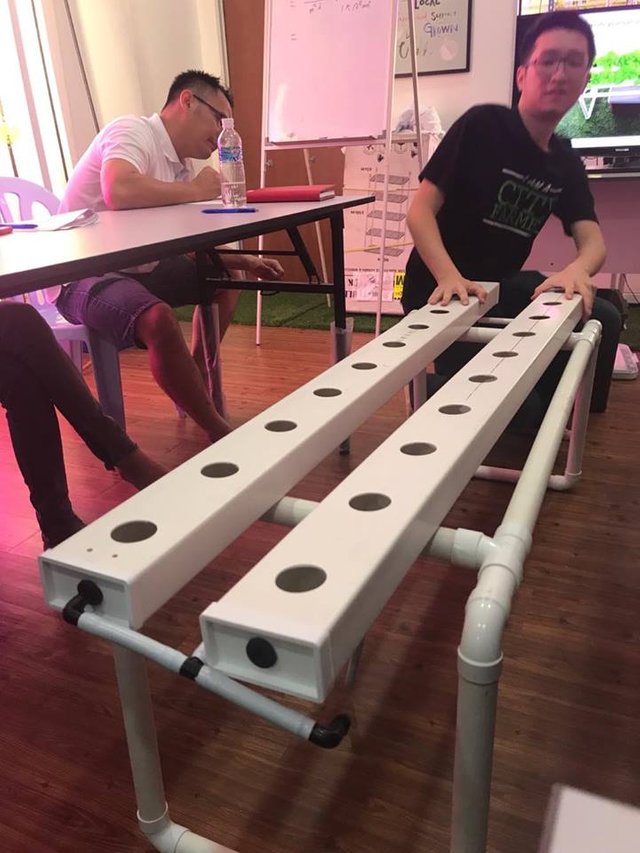
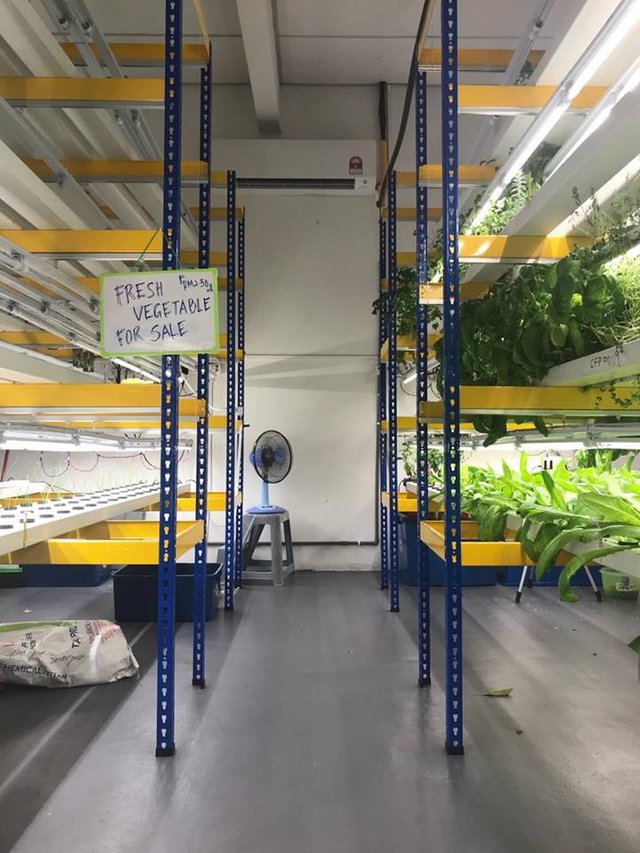
Good post! I myself have always wanted to visit a vertical farm!
Thanks! It is interesting to visit :)
This post recieved an upvote from minnowpond. If you would like to recieve upvotes from minnowpond on all your posts, simply FOLLOW @minnowpond